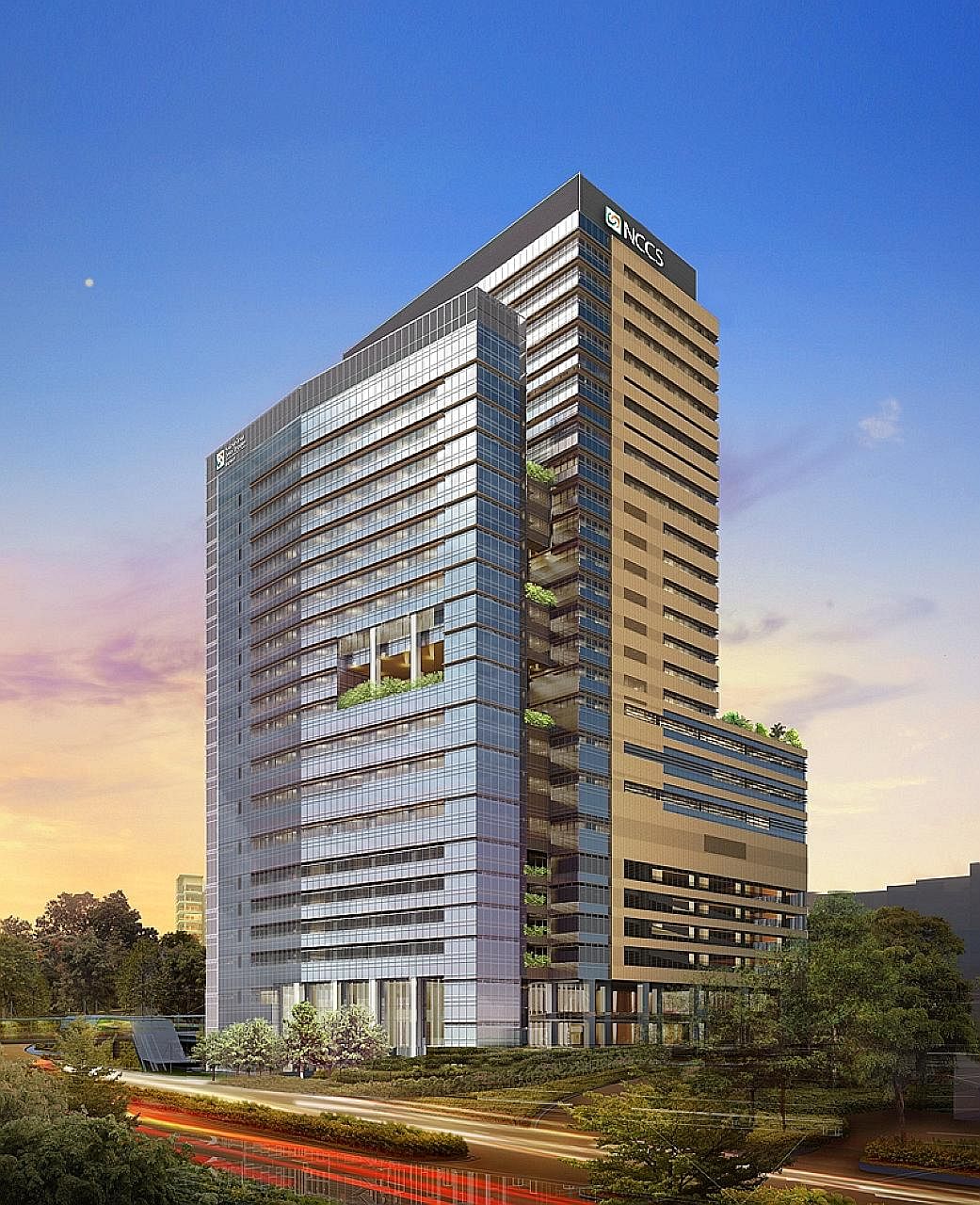Cancer patients here will have access to one of the most advanced forms of radiation therapy once the new National Cancer Centre Singapore (NCCS) building opens its doors.
As work on the building got under way, NCCS yesterday shared details about the new $100 million proton therapy centre that will be housed there to treat patients with a form of radiation that leaves healthy tissues relatively undamaged.
The new building, which is expected to be completed in five years, will also be equipped with other state-of-the-art facilities.
NCCS director Soo Khee Chee said: "It will make the patient's journey through a difficult situation, and complex environment, much easier."
A highlight of the new building will be the Goh Cheng Liang Proton Therapy Centre, which will have four treatment rooms, each equipped with a system to treat tumours with radiation. They will also be fitted with imaging systems to precisely position the patient for accurate beam delivery.
Singaporean businessman Goh Cheng Liang and the Goh Foundation donated $50 million to the centre and its research programme.

-
CURRENT BUILDING
6 NUMBER OF STOREYS
4 NUMBER OF CLEAN LABS
NEW BUILDING
24 NUMBER OF STOREYS
20 MINIMUM NUMBER OF CLEAN LABS
Proton therapy destroys cancer cells using positively charged subatomic particles.
This allows for more precise targeting of a tumour, compared with the X-rays used in standard radiotherapy. It also minimises a patient's exposure to radiation and causes less damage to healthy tissue and organs.
For example, proton beams can target a brain tumour without going beyond it to destroy other cells in the brain.
In contrast, X-rays can pass right through the cancerous growth to affect the healthy cells beyond it.
Protons, travelling at up to two-thirds the speed of light, enter the body but are programmed to slow down at the site of the tumour - where they release their energy, without going beyond it.
This means that the healthy cells on the way to the tumour get a low dose of radiation, and the ones behind it are not exposed at all.
Apart from the centre, the new 24-storey building, situated on the Singapore General Hospital campus, will house more facilities for cancer care, research and education, NCCS said yesterday at a ground-breaking ceremony for the new building.
A new Division of Cancer Prevention and Population Health is also being set up.
The cancer centre's new building will have a larger capacity than its current six-storey structure, allowing it to manage some 200,000 patient visits a year when it opens in 2022, compared with the 150,000 visits last year.
It expects to handle some 300,000 patient visits come 2030.
The new building will also have dedicated space and facilities for distinct types of cancer, whether colorectal or breast.
The current building has four clean laboratories, but the new one will have at least 20 of them. These labs extract healthy cells from the patient, prime them against cancer cells and infuse them back into the patient to fight diseases.
Patients will also be able to make more informed decisions on cancer care and treatment, with a new resource centre.
The new building, which has an estimated $400 million construction cost, will also have more room for research.
Health Minister Gan Kim Yong said at the ground-breaking ceremony: "NCCS will do more to support cancer prevention and has set up a new Division of Cancer Prevention and Population Health for this purpose."
The division will focus on three core areas, namely cancer genomics and epidemiology, as well as screening and control, he added.
It will identify ways to reduce cancer morbidity and mortality by investigating cancer causes and risk factors, such as genetic and environmental factors. It will also conduct clinical and community- based intervention studies in targeted populations.

